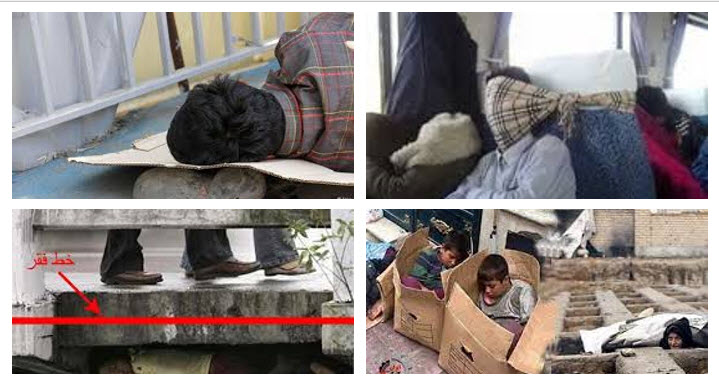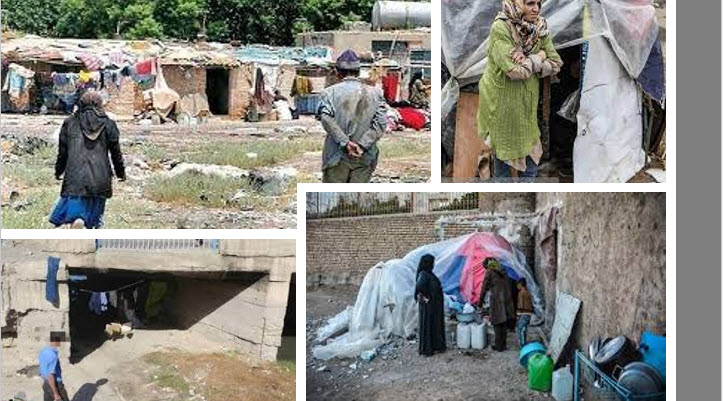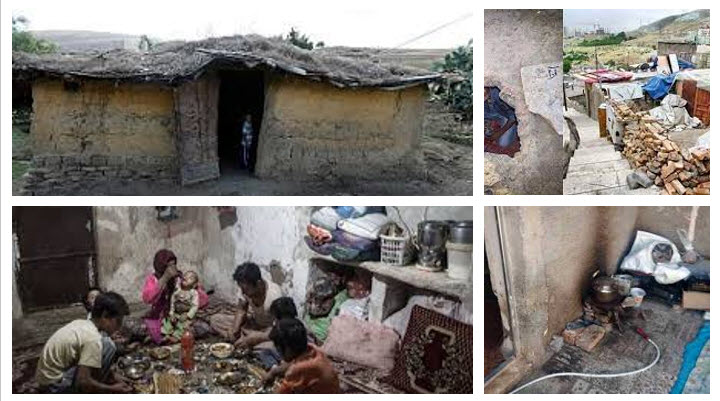
Unfortunately, this has now become a formal story in Iran; the number of visits to informal settlements has increased.
Iran has a long history of informal settlements, and whenever the country is in a situation of economic and political turmoil, the number of informal settlements increases dramatically. Tin villages, brick stove settlements, and slums are examples of informal settlements, which have evolved into different forms in recent years, such as grave sleepers, mountain sleeping, cardboard sleeping, valley sleeping, roof sleeping, and so on.
60 percent of Iran’s population is at risk of poverty
Unfortunately, this has now become a formal story in Iran; the number of visits to informal settlements has increased, and regime officials are not even listening to the regime’s social specialists about the dangers of this phenomenon, even for the regime itself. According to government figures, 60 percent of Iran’s population is at risk of poverty, with 45 percent living below the poverty level in housing.
As a result, in recent years, people have moved from the city center to the suburbs and from the suburbs to their villages. Because of economic and political concerns, the number of individuals living in the suburbs and rural areas is growing by the day, and as a result of unemployment, these people are turning to informal jobs such as peddling.

As a result, in recent years, people have moved from the city center to the suburbs and from the suburbs to their villages.
Houses without lasting materials, with a high seismic risk
Petty theft has also increased among the marginalized, and thefts no longer involve mobile phones, but coats and garments are now among the items stolen, with the major reason being that families are becoming poorer. The report of the regime’s Office of Social Studies of the Ministry of Labor, Cooperation, and Social Welfare on multidimensional poverty in the housing sector shows how harmful the rise in the average price per square meter is for society.
Residents in Tehran province, per the Ministry of Labor, Cooperation, and Social Welfare, must spend more on housing than people in other provinces. People in Sistan and Baluchestan and Gilan, on the other hand, live in extreme housing poverty, which implies that, in addition to paying more for housing, they live in homes with insufficient facilities or that are not made of lasting materials, in a country with a high seismic risk.

housing poverty, which implies that, in addition to paying more for housing, they live in homes with insufficient facilities or that are not made of lasting materials, in a country with a high seismic risk.
600,000 rural do not have access to affordable housing
The rise in the housing cost index in the household expenditure basket, combined with the fact that the waiting period in Iran is 2.5 times that of the global average for homeownership, demonstrates the high pressure on housing costs on the country’s households, even as the national currency depreciates.
When the number of families and the rate of lack of cheap housing are compared, it can be stated that around 9 million urban households and 600,000 rural households do not have access to affordable housing, and given the current price trend, they will never have access to a house.

According to this ministry, “housing poverty in Iran has a wide range, including the inability to finance housing.
The poor have twice as many housing problems
According to the Ministry of Labor, Cooperation, and Social Welfare, poor housing refers to a condition in which people lack access to at least one of the following: water, sanitation, sufficient housing, sustainable housing, and business security. According to the regime’s Ministry of Cooperatives, the poor have twice as many housing problems as non-poor people.
Of course, the poor, according to this ministry, are those who live below the absolute poverty threshold. According to this ministry, “housing poverty in Iran has a wide range, including the inability to finance housing, as well as people living in houses that are unsuitable in terms of age, type of structure, and access to urban facilities.”
According to the budget deduction report, in 2017, $4.8 billion was distributed among importers who never imported any goods. Summing up these numbers, at least $70 billion has been stolen from the Iranian people by this regime.
MEK Iran (follow us on Twitter and Facebook), Maryam Rajavi’s on her site, Twitter & Facebook, NCRI (Twitter & Facebook) and People’s Mojahedin Organization of Iran – MEK IRAN – YouTube

